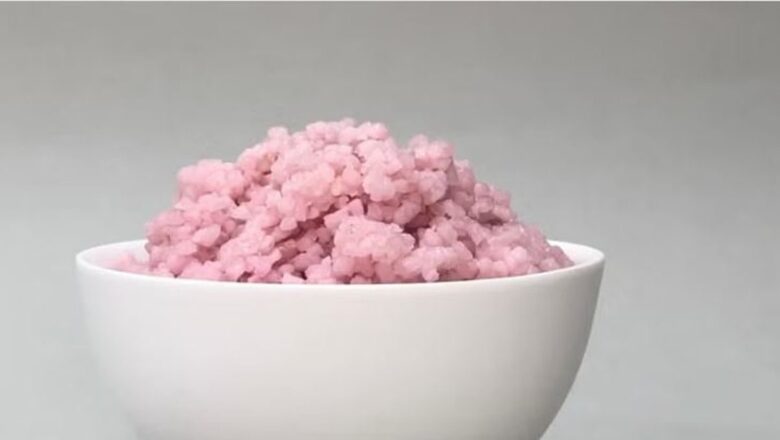
views
Imagine, finding one protein-packed meal that can be grown all seven seasons, without worrying about land, weather, water and labour. A scientist in South Korea has invented cell-cultured protein rice, consisting of meat.
The hybrid rice is apparently a bit firmer and brittle than regular rice, but has more protein, reported Matter journal.
How the Hybrid Rice was Grown in the Lab?
The rice was first coated in fish gelatin to help maximise the beef cells, and then the grains were left in petri dish to culture for up to 11 days.
After the cultivation period, Sohyeon Park and her team tested the rice to study its structure and nutritional content. They found that the beef-rice hybrid was firmer and more brittle than normal rice.
They found that the new rice was higher in protein and fat content – 8% more protein and 7% more fat – than the regular rice.
Is this the Answer to Sustainable Food?
According to the scientists’ calculations, as quoted by The Guardian, hybrid rice can make food production more sustainable. For example, producing 100 gm of meat protein releases nearly 50 kg of carbon dioxide, while 100 gm of protein from hybrid rice would release less than 6.27 kg of the gas.
They say the rice would be more affordable, costing around $2.23 per kg (Rs 185 per kg).
Prof Jinkee Hong, who led the work at Yonsei University in South Korea, said the researchers used muscle and fat cells from hanwoo cattle. But the team is exploring other ways to ensure supplies of cells are maintained in the laboratory. Future hybrid rice varieties could contain fish or other types of meat for nutritional requirements, Hong said as quoted by The Guardian.
Researchers say that the food may serve as “relief for famine, military ration or even space food” in the future.
According to a report by the Good Food Institute and CE Delft, lab-grown meat could lower environmental impacts by 2030. It would have lower carbon footprint than conventional meat if grown in a laboratory powered by renewable energy.
Reports suggest that 550 to 700 litres of water is required to produce 1 kg of meat as compared to lab-grown meat, which can reduce water consumption by 82-96%, saving water resource.
Lab-grown meat also offers enhanced food safety, preventing risk of diseases from conventional meat production such as Salmonella or E Coli.
Challenges Around Hybrid Meat
This is not for the first time that a lab-grown meat has been cultivated. In 2013, a lab-grown burger was unveiled in London, opening the market for eco-friendly meat. The Dutch scientist produced the first hamburger patty made from tissue grown outside of an animal.
The lab-grown meat eliminates the requirement for animal slaughter but it cells sources from animals are need to produce it, which makes non-vegan, and many vegetarians may not find it themselves at ease in eating a meat-looking food.
Also, scalability is another major concern as it may not be feasible to increase the production of lab-grown meat to meet the global demand.
Italy has supported a bill to ban laboratory-produced meat in order to preserve the country’s food traditions.



















Comments
0 comment